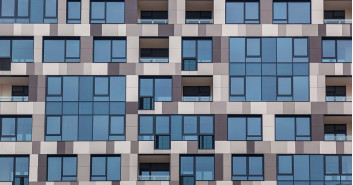Components of a Modular Building
Modular buildings consist of onsite foundations, structural frames, finishes, utilities, and marriage joints.
When viewing a finished, large-scale modular building, it can be difficult to imagine all of its components. The fact is, though, that at one point in its past, that building was actually countless pieces moving through an assembly facility. So, while the quality and beauty of the finished structure attracts the most attention from developers, it’s important to understand what exactly goes into a modular building.
From its steel to its light fixtures, a modular building is comprised of thousands of different parts. Virtually all fall into one of the following six major component categories:
| 1. Onsite Foundation | 4. Plumbing, Electrical and HVAC |
| 2. Structural Frame | 5. Interior Finishes |
| 3. Exterior Finishes | 6. Marriage Joints |
1. Onsite Foundation
Modular construction can move most of the building process into an offsite facility, with units assembled along a production line. Even the most advanced modular processes, however, incorporate some element of onsite construction.
This includes the building’s excavation, footings and foundation, and takes shape while its other components are being assembled in the manufacturing facility, contributing to the overall efficiency of modularization.
2. Structural Frame
A modular building is comprised of modular units, each supported by a structural frame around which the rest is assembled.
This will typically feature six sides and be made of wood or steel. The latter, such as those assembled by iBUILT, offer greater strength and long-term durability, and enable buildings to reach greater heights than those built of wood.
3. Exterior Finishes
In traditional construction, exterior finishes are one of the last features to be completed. Modular construction does so much earlier in the process, however, working from the outside of a unit, in. This includes siding, exterior light fixtures, windows and doors.
A protective wrapping added later in the process will safeguard these finishes during the transportation and installation stages.
4. Plumbing, Electrical and HVAC
Utilities such as plumbing, electrical and HVAC are added to the unit after the exterior finishes. These are then sealed in preparation for travel, and later, installation.
5. Interior Finishes
Interior finishes include typical aspects, such as walls, flooring, and countertops. Modular construction differs from traditional construction in its ability to go even beyond these standard finishes.
Full-service modular manufacturers, such as iBUILT, can ensure specific features, including furniture and appliances, for example, are present in each unit before being set in place.
6. Marriage Joints
The last major component of a modular building is the marriage joints holding the units together. Though not visible, these connections are responsible for ensuring each module remains fastened to those around it, forming the coherent building.
As the units are lifted and lowered into place, construction crews make sure each is secure, while attaching its utility systems.


